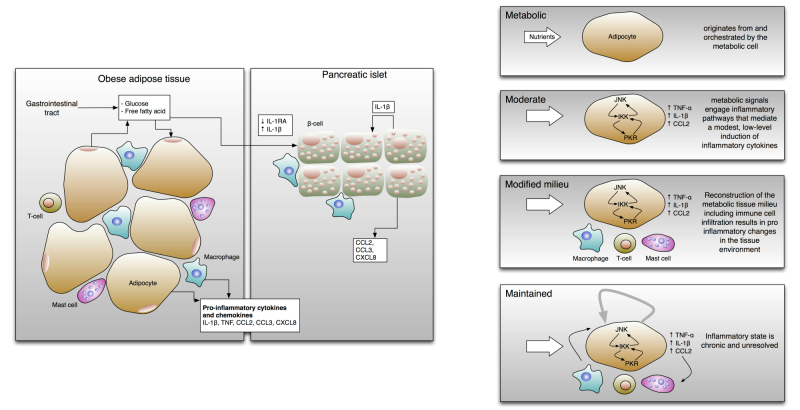Figure 1.
Left: Excessive levels of nutrients, including glucose and free fatty acids, stress the pancreatic islets and insulin-sensitive tissues such as adipose tissue, leading to the local production and release of cytokines and chemokines (eg, IL-1β, TNF, CCL2, CCL3, and CXCL8). Furthermore, production of IL-1 receptor antagonist (IL-1RA) by β-cells is decreased. As a result, immune cells will be recruited, which contribute to tissue inflammation [14]. Right: Hallmarks of metaflammation. The first feature of this type of inflammation in obese individuals is that it originates from signals within metabolic cells such as adipocytes. Second, the metabolic signals trigger inflammatory intracellular signaling pathways that mediate downstream inflammatory responses (eg, JNK, IKK, or PKR pathways). The activation of these mediators induces a low level of chronic inflammation in response to the excess nutrients. Over time, this may induce the recruitment and activation of specialized immune cells [1].

